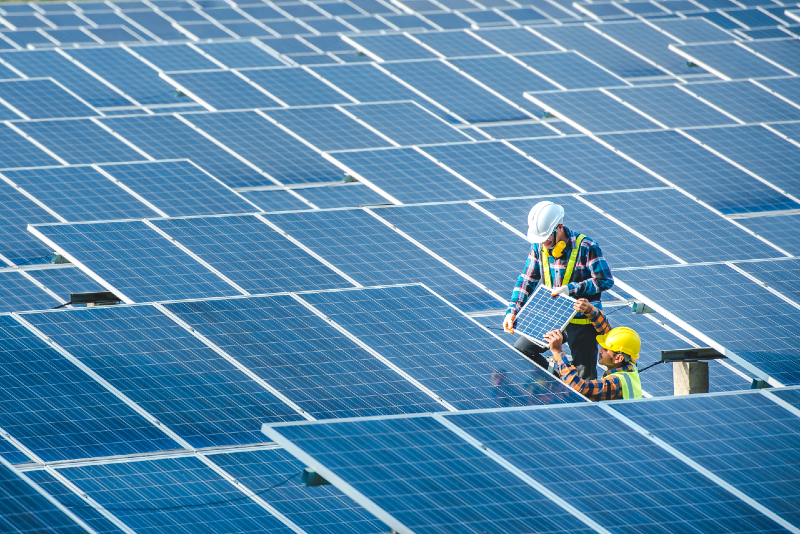Minimizing our climate change also means understanding and reducing our environmental impact, including with respect to our energy use and GHG emissions. We are actively pursuing opportunities to assess and reduce our energy consumption and emissions along our value chains while addressing risks climate change may pose for our business.
In 2022, we announced a Sustainability Goal in support of this approach: reduce our combined Scope 1 and Scope 2 GHG emissions intensity by 25% by 2030 from a baseline of 0.161 MT* CO2e/MT of production.
In 2023, our combined Scope 1 and Scope 2 GHG emissions intensity was 0.163 MT CO2e/MT of production which is an increase of 1.2% as compared to our 2020 baseline. We have restated our 2020 combined Scope 1 and Scope 2 GHG emissions intensity goal baseline to 0.161 MT CO2e/MT of Production due to an updated production definition, which we feel more accurately captures our total production values. Although our absolute emissions footprint decreased since 2020 by 4.2%, variations in product mix, geographic distribution of energy consumption and shifts in emissions factors have led to a temporary rise in emissions intensity. Toward the end of 2023, we introduced new initiatives and entered into green contracts, which we anticipate will enhance our emissions intensity starting in 2024 and beyond. Our strategy to improve on our performance to reduce our GHG emissions includes:
- Continuing to conduct audits of our sites to identify our main energy consumers and reduce consumption
- Investing in technology improvements, including replacing outdated and inefficient equipment and high-energy consuming lighting
- Shifting to renewable electricity
- Cascading energy and emissions reduction goals into our supply chain and R&D organizations to align our teams behind innovative solutions for our own operations and our customers’
- Engaging with third-party energy and emission experts as new opportunities arise
- Conducting environmental awareness training
Managing Our Impact
We strive to understand and reduce our environmental impact and regularly implement initiatives to achieve this objective. With respect to our energy use and GHG emissions for example, at least 80% of our sites have replaced traditional lighting with LEDs, either partially or completely, and we are evaluating additional replacements where feasible. We also routinely analyze our environmental policies and procedures to comply with, and exceed where possible, requirements under applicable laws, regulations and industry standards.
Our sites track various sustainability and efficiency metrics and are committed to driving environmental performance improvements. This process is being fully digitalized to support our ability to respond in real-time.


Measuring Our Footprint
Due to the formulation-based nature of our operations, our energy consumption is lower than that of other more traditional chemical manufacturers who focus on molecule synthesis. Regardless, we actively monitor our electricity and energy consumption to help drive reductions. We regularly assess and measure our Scope 1 and 2 emissions generated by our organization using the market-based methodology outlined in the World Resource Institute’s GHG protocol.
In 2023, electricity usage accounted for approximately 40% of our total energy consumption and accounted for ~64% of our total (Scope 1 and Scope 2) GHG emissions. In addition, renewable energy contributed ~8% of our overall energy use, which was 51% higher than the renewable energy we consumed in 2020 and ~9% higher than 2022.
Energy & Emissions Reduction Initiatives
Energy Efficient Equipment in Scotland – our manufacturing site in Glenrothes is installing new technology which we forecast will result in a reduction of ~20% electricity consumption, and a ~25% reduction in the site’s CO2e footprint annually.
Trecate & Shenzhen Air Compressor Replacement – our sites in Trecate and Shenzhen replaced their air compressors with more energy efficient models, reducing their electricity consumption from this source by a forecasted ~7.4% and ~3%/year respectively.
Gutersloh – we installed improved extractor fan controls at our Gutersloh site, which we are forecasting will reduce our electricity consumption by 4% and our CO2e footprint by 3% in Gutersloh each year.
In 2023, in an effort to further reduce our environmental footprint, many of our locations also switched to green utility contracts.
